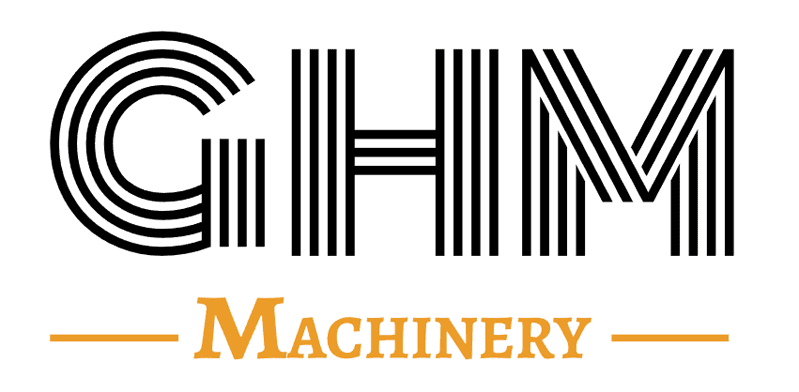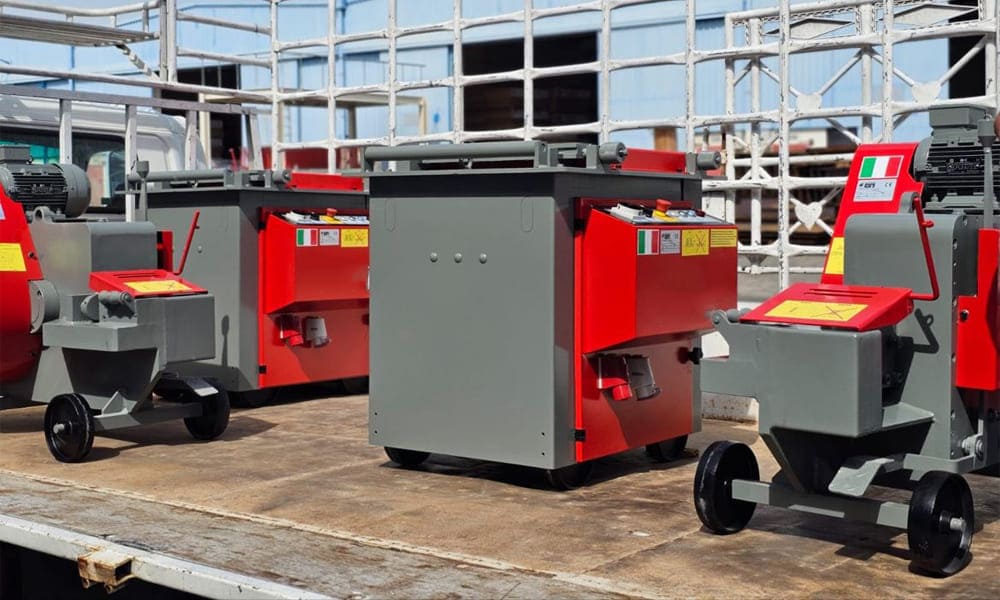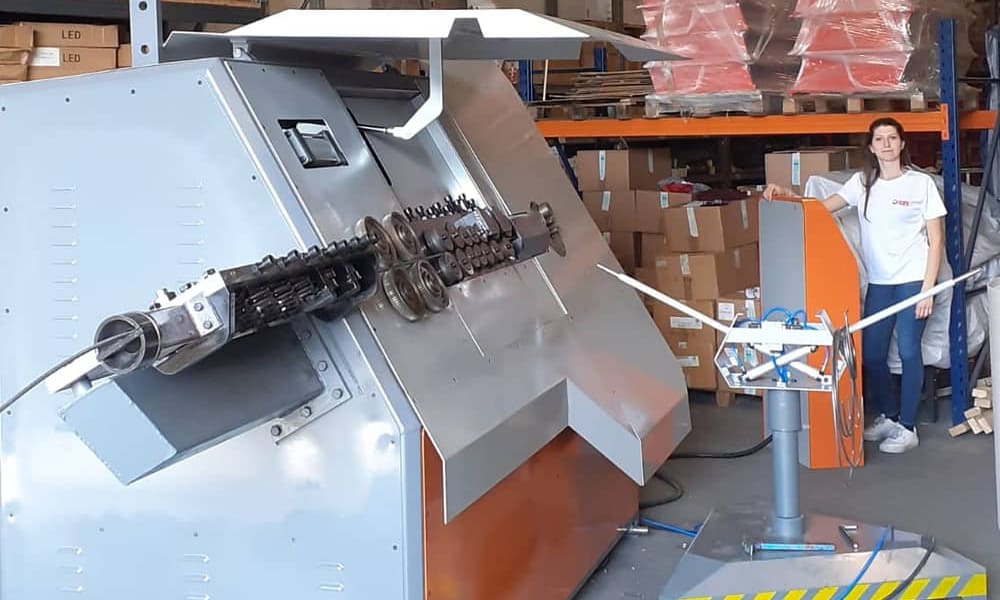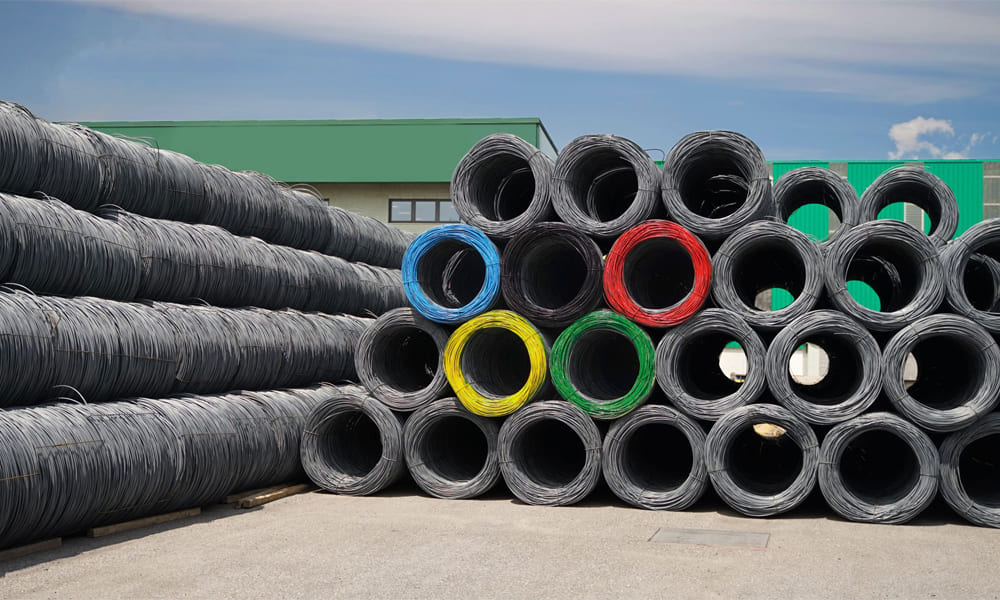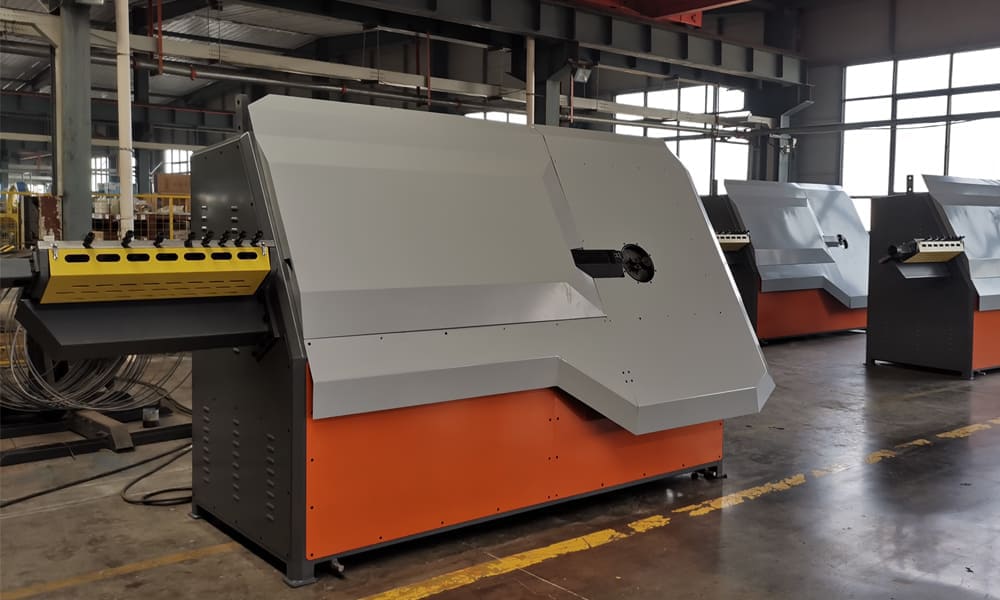Steel Rod Bending Machine is pivotal in steel processing, offering precision bending capabilities crucial for construction projects. Understanding the working mechanism, operational procedures, and safety guidelines is paramount for efficient and safe usage. Let’s delve into the intricacies of steel bar bending machines and best practices for their operation.
Steel Rod Bending Machine Working Mechanism Overview
The steel bar bending machine operates with a horizontal working disc rotating on a vertical axis. Steel bars are positioned on the work plate, with supporting and bending pins facilitating bending as the disc rotates. Various diameters of steel bars can be accommodated by adjusting the positioning of bending pins and center pins on the work plate.
Key Components and Feature
Reducer, large gear, pinion, and curved disk constitute the machine’s structure.
Two-stage brake motor connected to the reducer for precise speed control and stable bending operations.
Central shaft and bending axis holes on the bending disk allow for versatile bending configurations.
Intelligent control capabilities for automated bending processes.
Emphasis on accuracy, stability, and safety during bending operations.
Operational Procedure
Preparation:
Ensure good mechanical performance, level workbench and machine table, and have various mandrel tool blocks ready.
Mandrel Installation:
Install the appropriate mandrel, forming shaft, or stop frame based on steel bar diameter and bending requirements.
Safety Check:
Verify the integrity of mandrel, block, turntable, and protective covers before running the machine empty to ensure normal operation.
Steel Bar Insertion:
Securely insert steel bars into the fixed gap of the turntable, ensuring the machine and steel bar are firmly positioned.
Operational Restrictions:
Avoid changing mandrels, adjusting speed, or refueling during operation. Process steel bars within specified diameter, quantity, and mechanical speed limits.
Material Specific Guidelines:
Follow machine nameplate instructions for bending high-hardness or low-alloy steel bars, including diameter limitations and mandrel replacements.
Safety Protocols:
Maintain a safe distance from bending steel bars, stack semi-finished products neatly, and avoid upward-facing hooks to prevent accidents.
Directional Changes:
Wait for the turntable to stop before changing its direction.
Post-Operation:
Clean the work area, perform machinery maintenance, and securely lock the machine’s power box after shutting down.
Conclusion
Adhering to these operational procedures and safety guidelines ensures smooth and safe operation of steel bar bending machines, optimizing productivity while prioritizing worker safety and equipment longevity. Mastery of machine functions and diligent adherence to protocols are key to successful steel bar bending operations in construction contexts.
